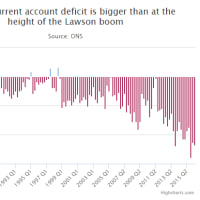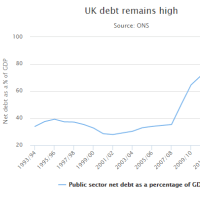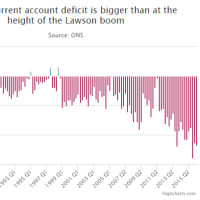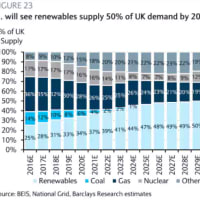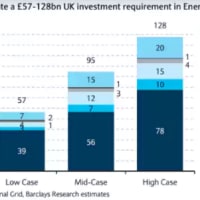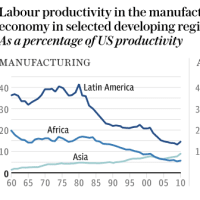相変わらずいい加減な日本知識を知ったかぶりして書くんだから(笑)。
桃色のピリングさんの方が余程マシよ。
Suicide in Japan:Death be not proud
(日本の自殺事情:自慢スンナよ)
The Economist:May 1st 2008 | TOKYO
桃色のピリングさんの方が余程マシよ。
Suicide in Japan:Death be not proud
(日本の自殺事情:自慢スンナよ)
The Economist:May 1st 2008 | TOKYO
A rash of suicides horrifies Japan
自殺連発に慄く日本
“DO NOT open! Gas being created!” Written in red felt-tip pen and affixed to a door, they are among the last words of a 14-year-old Japanese schoolgirl, who took her life on April 23rd. The warning followed the advice of a website that also provided instructions for creating hydrogen-sulphide gas by mixing toilet-bowl cleaner with bath salts.
「開けないで!ガスが出ています!」。
赤ペンで書かれて扉に貼られたこのメッセージは、4月23日に自ら命を絶った、14歳の日本の女学生の最後の言葉の一部である。
この注意書きは、硫化水素の作り方(便器用洗剤と入浴剤を混ぜる)を指導したサイトのアドバイスに従ったものだ。
This simple method of suicide claimed some 60 lives in April―mainly of people in their teens or 20s―and around another 20 earlier this year. The colourless, pungent gas does not dissipate easily. So bystanders and would-be rescuers are put at risk. The girl's mother was hospitalised and around 100 neighbours had to evacuate their homes.
この簡単な自殺方法で、4月には約60人が死亡した(主に10代や20代)。
また、今年先には更におよそ20人が亡くなっている。
この透明な刺激臭をもつガスは、容易にはなくならない。
従って、第三者や助けようとする人も危険にさらされる。
少女の母親は病院に担ぎ込まれたし、近隣住民約100人も避難しなければならなかった。
Yet this is only the latest, macabre, technique in a country that suffers an epidemic of suicides. Japan has one of the highest suicide rates among rich countries. Cultural factors are partly at play. Japanese society rarely lets people bounce back from the perceived shame of failure or bankruptcy. Suicide is sometimes even met with approval―as facing one's fate, not shirking it. The samurai tradition views suicide as noble (though perhaps out of self-interest, since captured warriors were treated gruesomely). Japan's main religions, Buddhism and Shintoism, are neutral on suicide, unlike Abrahamic faiths that explicitly prohibit it.
しかしこれは、自殺の蔓延に見舞われている国での、最新かつ気味の悪いテクニックに過ぎない。
先進国の内、日本の自殺率は最高だ。
文化的要素も絡んでいる。
日本社会は滅多に、失敗や破産といった恥とやらから復帰することを許さない。
自殺は時に賞賛すら受ける…運命から顔を背けなかったとして。
侍の伝統は、自殺を崇高なものと見なす(囚われの身となった戦士は残虐な扱いを受けたので自己利益からだろうが)。
自殺を明白に禁止するアブラハム系の信仰とは違って、日本の主な宗教である仏教と神道は自殺に対して中立的だ。
Yet economic woes play an even bigger role. Suicide rates increased sharply in the mid-1990s as the economy soured, and have remained high since (even as the economy has improved slightly). Financial concerns are cited in one-fifth of suicide notes; almost half of all suicides are unemployed. Some take their lives so that surviving family members can collect insurance, which has led insurance firms to defer payments for two or three years as a deterrent. For the same reason, Japan Railway charges suicide victims' families for the cost of the inconvenience and clean-up.
しかしより大きな役割を演じているのは、経済的な苦境である。
1990年代半ば、経済が悪化する中で自殺率は急増し、以来高いままである(経済は少々改善したにも拘らず)。
遺書の1/5には、金銭的な心配が挙げられている。
半分近くの自殺者は失業者だ。
中には遺族が保険金をもらえるので自殺する者もいるが、これにより保険会社は抑止のために2-3年間支払を延期するようになった。
同じ理由により、JRは自殺者の遺族に迷惑料と清掃料を請求している。
Last year the government instituted measures such as a counselling service and hotlines, with the aim of cutting the suicide rate by 20% in nine years. But these are palliatives. More important would be a change in social attitudes. Suicide might be less common if, rather than force people to endure lifelong shame, Japanese society began to allow its people second chances.
昨年、政府は9年以内に自殺率20%削減を目指して、カウンセリング・サービスやホットラインといった対策を打ち出した。
しかしこれらの措置は一時逃れに過ぎない。
より重要なことは、社会の態度を帰ることだ。
人々に死ぬまで恥を耐え忍ぶことを余儀なくするのではなく、日本社会がセカンド・チャンスを許し始めるようになれば、自殺はもっと一般的でなくなるかもしれない。
 | KGBの世界都市ガイド晶文社このアイテムの詳細を見る |










